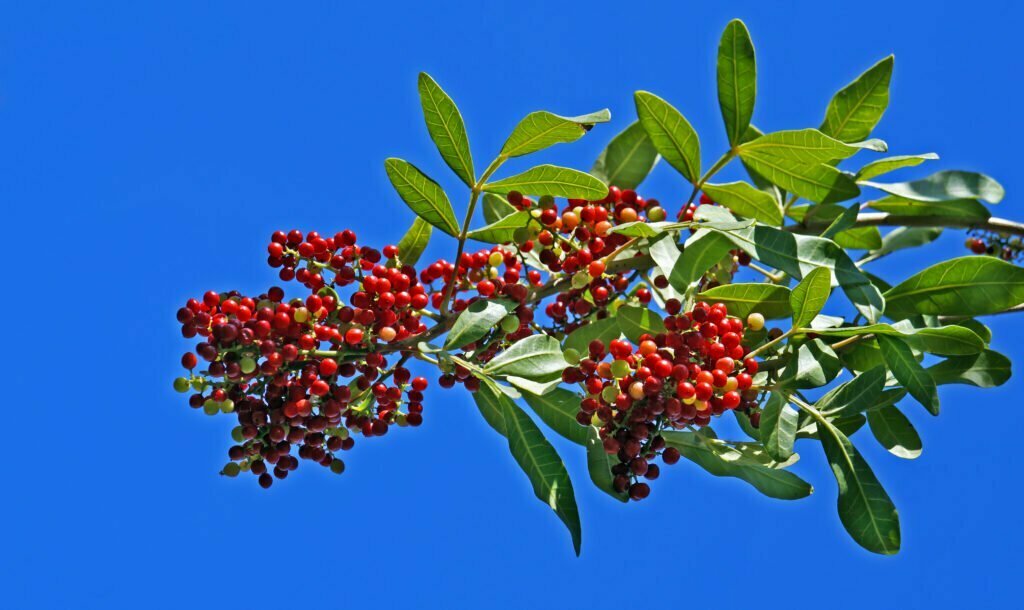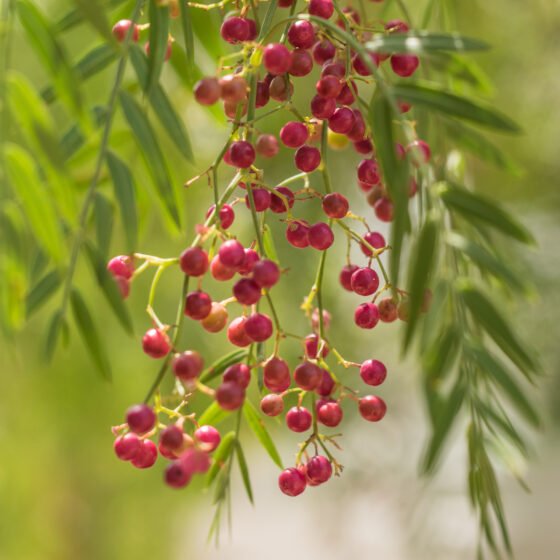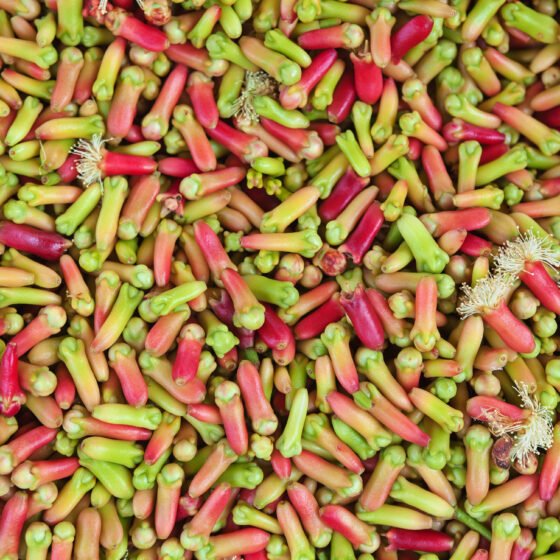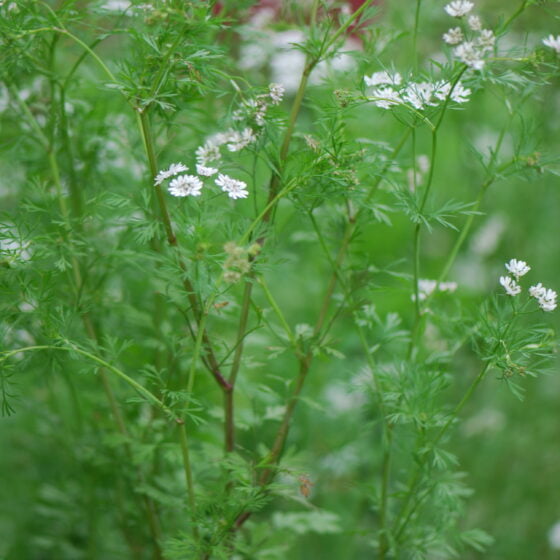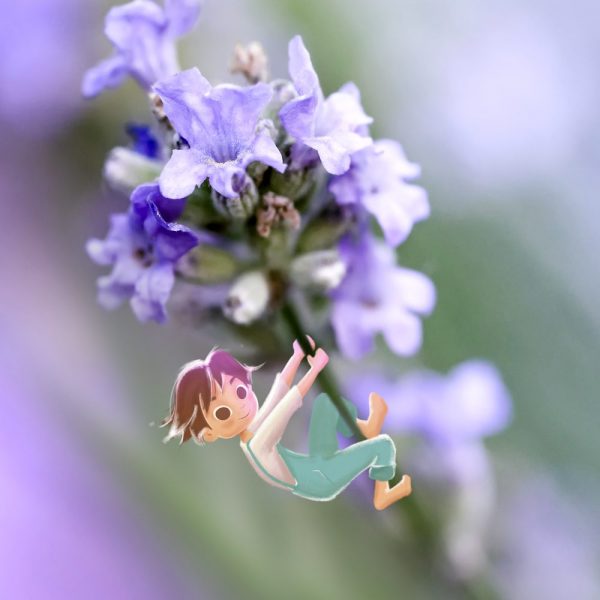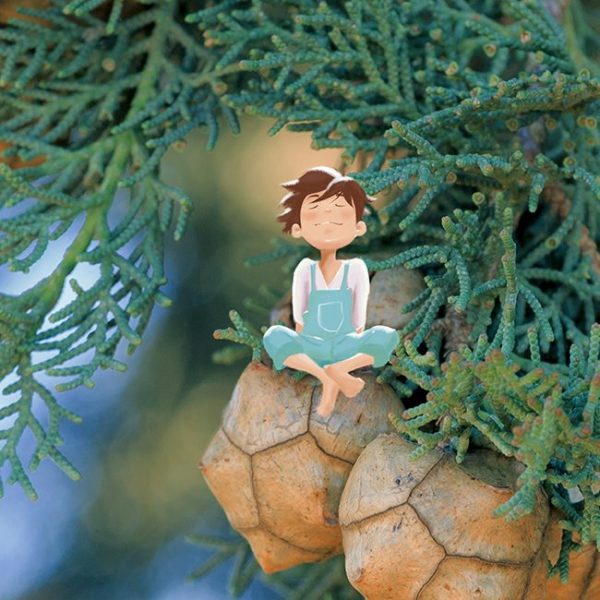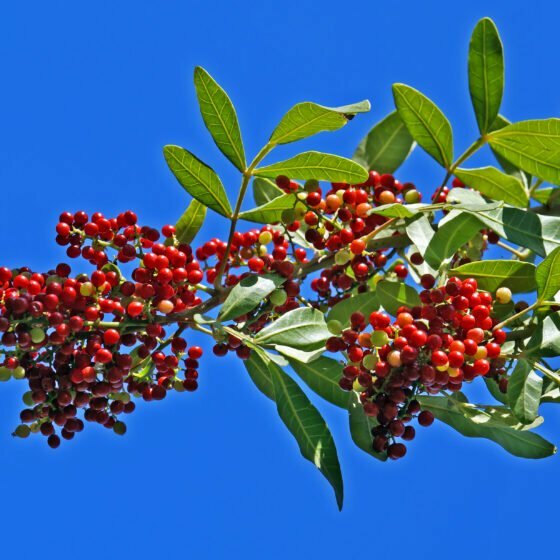
Pink peppercorn
Schinus terebenthifolius
General data
Harvest Calendar
- J
- F
- M
- A
- M
- J
- J
- A
- S
- O
- N
- D
Product details Our added value
We guarantee the sustainability of supplies from both the Indian Ocean and Brazil through long-term relationships with local partners. These partnerships ensure that both parties are committed to the quantity and quality of the pink peppercorns, but also guarantee a fair price for the harvesters.
We select our sourcing areas in accordance with our ethical commitments and in keeping with sustainable harvesting practices.
The berries are processed in supercritical CO2 extraction, a process that will bring a sparkling freshness to the CO2 extracts of pink berries.
Fragrance side
Our new quality, made from pink peppercorns from the Indian Ocean and Brazil, keeps this fresh, sparkling and peppery top note but is accompanied by dry and woody notes of cedar wood.
CO2 extract is mainly used in fine perfumery, but also in cosmetics in smaller quantities.
In fine perfumery, CO2 extract of pink berries brings elegance, freshness and modernity.
Used in floral bouquets but also with woody, violet or rose notes, the pink peppercorns CO2 extract adds spice and freshness to perfumes. Its sparkling top note, its spicy freshness, will complement citrus, fruity but also aromatic notes.
About
Native to the Indian Ocean, the Schinus terebinthifolius is a small tree with a dense, drooping silhouette. The delicately scented flowers form hanging clusters that give the drupes or pink berries. It is the drupes that give off the spicy, peppery and woody scent characteristic of pink pepper.
Between May and July, collectors cut the branches with the most berries with a machete and collect them in bags. The berries are then separated from the branches: either by the “beating” technique, which consists of hitting the branches with a small paddle, or by hand, branch by branch. Then the berries are stored in wooden crates and then put in a drying oven to reduce their moisture content. They are then winnowed with a sieve to separate them from the last pieces of branches and leaves.
Our added value
We guarantee the sustainability of supplies from both the Indian Ocean and Brazil through long-term relationships with local partners. These partnerships ensure that both parties are committed to the quantity and quality of the pink peppercorns, but also guarantee a fair price for the harvesters.
We select our sourcing areas in accordance with our ethical commitments and in keeping with sustainable harvesting practices.
The berries are processed in supercritical CO2 extraction, a process that will bring a sparkling freshness to the CO2 extracts of pink berries.
Fragrance side
Our new quality, made from pink peppercorns from the Indian Ocean and Brazil, keeps this fresh, sparkling and peppery top note but is accompanied by dry and woody notes of cedar wood.
CO2 extract is mainly used in fine perfumery, but also in cosmetics in smaller quantities.
In fine perfumery, CO2 extract of pink berries brings elegance, freshness and modernity.
Used in floral bouquets but also with woody, violet or rose notes, the pink peppercorns CO2 extract adds spice and freshness to perfumes. Its sparkling top note, its spicy freshness, will complement citrus, fruity but also aromatic notes.
About
Native to the Indian Ocean, the Schinus terebinthifolius is a small tree with a dense, drooping silhouette. The delicately scented flowers form hanging clusters that give the drupes or pink berries. It is the drupes that give off the spicy, peppery and woody scent characteristic of pink pepper.
Between May and July, collectors cut the branches with the most berries with a machete and collect them in bags. The berries are then separated from the branches: either by the “beating” technique, which consists of hitting the branches with a small paddle, or by hand, branch by branch. Then the berries are stored in wooden crates and then put in a drying oven to reduce their moisture content. They are then winnowed with a sieve to separate them from the last pieces of branches and leaves.
Other type of extracts
(Spicy)
